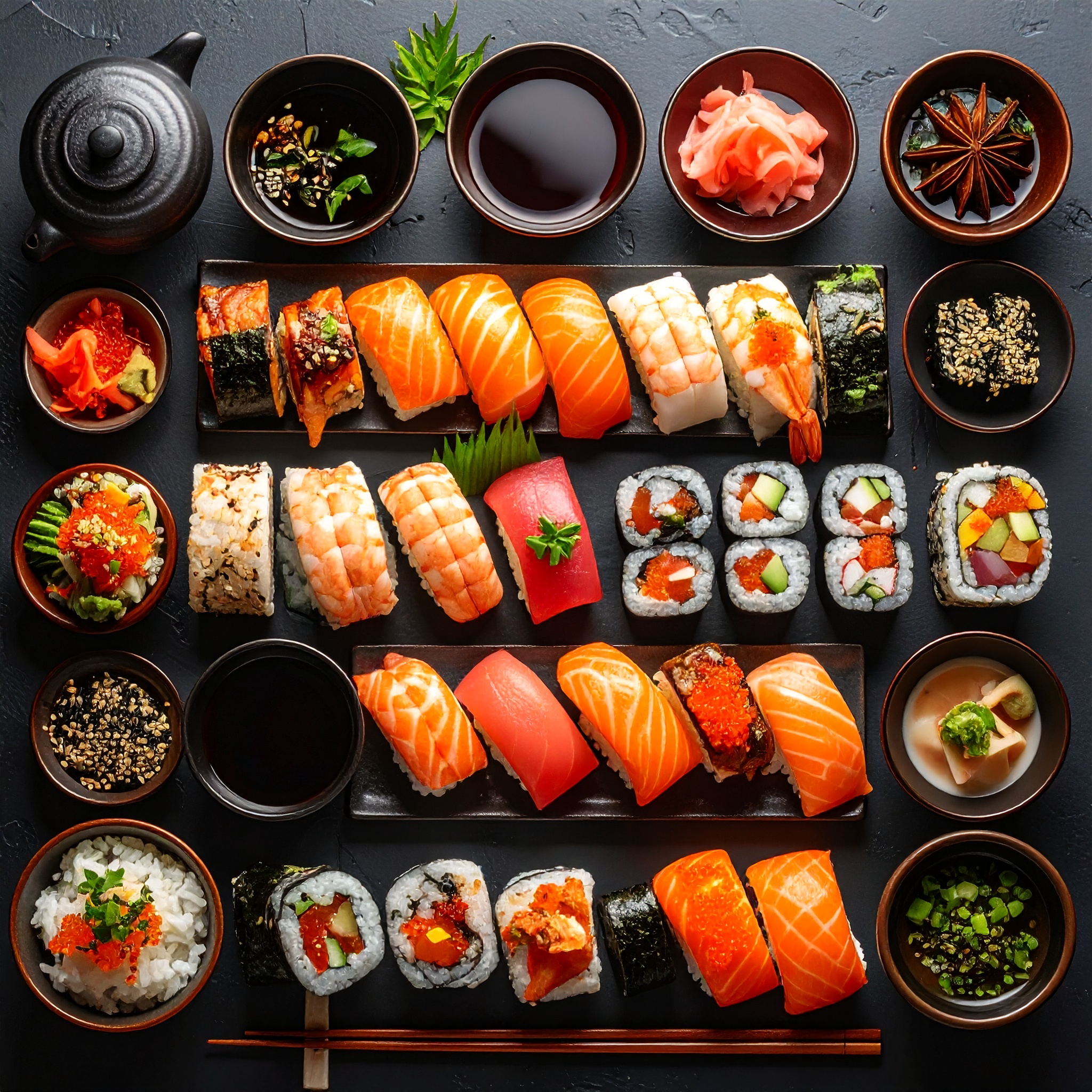Every ingredient has its moment of peak flavor—when nutrients are most abundant, aromas most robust, and taste most profound. In Japan this special period is called shun. More than culinary know-how, shun embodies a cultural value rooted deeply in Japanese life and sensibility: to attune to natural rhythms, embrace the present gracefully, and avoid forcing what nature did not intend. This culinary practice is steeped in an aesthetic that reveres the passage of time.
The concept of shun is intrinsically linked to climate and terroir. In spring, foraging yields wild vegetables, bamboo shoots, and Spanish mackerel. Summer brings tomatoes, cucumbers, and sweetfish. Autumn delivers chestnuts, matsutake mushrooms, and saury. Winter offers the likes of radish, napa cabbage, and cold-water yellowtail. These seasonal treasures are not only at their most delicious but also most nutritious and economical. By waiting for nature’s optimal moment instead of forcing growth or preservation, one achieves harmony—in both body and spirit.
Traditionally in Japan, seasonal change was experienced through food. The calendar’s 24 solar terms and 72 climate micro-seasons guided daily menus. For example: bean rice at beginning of spring, chilled dishes at the summer solstice, mushroom rice at the autumn equinox, and simmered pumpkin at the winter solstice—each aligning meals with seasonal ritual.
Eating seasonal food carries meaning beyond taste. First, it is a conversation with nature—honing awareness of climate, soil, sea, and air. Second, it is care for the body—consuming cooling produce in summer and warming root vegetables in winter. In heeding nature’s cues, this approach subtly supports wellness and vitality.

Seasonal ingredients are cherished in Japan precisely because they require no preservation—they shine most brightly in their pure form. Whether simmered in salt, cooked in dashi, grilled over charcoal, or lightly cured in vinegar, these methods strip away excess to highlight the ingredient’s aroma and texture. Embedded in this approach is Japan’s aesthetic of subtraction—the belief in trusting nature and doing less, not more. This minimalism is the guiding principle behind truly embracing shun.
This reverence for seasonality extends beyond home cooking to the refined worlds of kappo and kaiseki. Chefs visit markets daily, observing each ingredient’s condition, and designing menus that reflect not just flavor—but the day’s weather and humidity. In early summer, a dish of honey-soaked green plums; in early autumn, figs dressed in white tofu; on cold winter nights, a smooth turnip soup. Each plate resonates with the unfolding season.
Even the vessels that bring these dishes to life carry seasonal meaning. In spring, porcelain adorned with blossoms; summer sees glass or celadon; autumn brings leaf-inspired ceramics; and in winter, earthy glazes that echo the soil. Through touch, sight, and aroma, these presentations craft a miniature natural world on the table.
Honoring shun is not only cultural—it’s sustainable. Seasonal produce grows naturally in its season, reducing the need for energy-intensive preservation or long-distance transport. By using what is available, where and when it is available, Japan’s food culture practices environmental mindfulness, protects food safety, and supports local communities.
Thanks to advances in storage and transportation, seasonal awareness has weakened. Fresh vegetables and fruits are available year-round, distancing us from the rhythms of time. While undeniably convenient, this shift often erodes the excitement of “only at this moment” and our sense of connection with nature.
That is precisely why shun—the act of savoring what’s in season—has become a luxurious, enriching experience. Choosing ingredients that reflect the current climate, preparing meals that honor the day’s air and temperature, adorning the table with seasonal blooms, and selecting fitting dishware—all these small gestures breathe life into Japan’s tradition of mindful living.
Shun is a gift time gives, cultivating our sensitivity to change and a deeper appreciation for the finite. To not resist the season is to live in harmony with nature. The wisdom embedded in Japan’s culinary traditions transcends eras, reminding us now of what truly matters.




